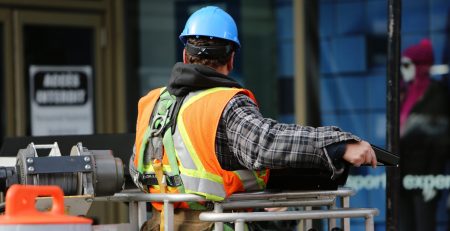Building Regulations – How Can You Prevent Falls on Your Property?
Building regulations are so important when designing a property, and in the UK there are very specific requirements that ensure people are kept safe. That’s why Document K was created as part of building regulations, and this specific set of regulations protects staff and visitors to your property from falling, collisions, or impact. So how can you ensure you are compliant with Document K? Here’s a basic guide to what the document includes and what you need to do.
Stairs
Stairs can be a dangerous area of any workplace or home, and you always have the risk of people not paying attention and potentially slipping or falling. That’s why there are guidelines about the maximum pitch, overlap and rise of stairs, and why in certain environments you’ll need to fit stair treads. There are also strict guidelines on the minimum headroom on a flight of stairs, as well as the width, which will ensure that people have enough space to move around comfortably and safely.
When you are building stairs, it’s also important to pay attention to the placement and height of handrails. You’ll need to ensure they are at the right height – 900 to 1000 mm from the pitch of the floor so people can hold them firmly, and that they are sturdy and secure. Handrails are a good idea for staircases in both domestic and commercial environments, and they’re often a safety requirement when building any new properties.
Protection from falling
There are several areas where you might need to offer protection from falls. Some of them defined in document K include:
- Any roof where people have access
- Ramps
- Balconies
- Light-wells
- Sunken areas
- Drops
This can be inside a building, or outside in garden areas or car parks, basically anywhere where people might accidentally wander and fall. If you’re not 100% sure whether it’s a hazard, then it’s best to err on the side of caution. Most builders will install metal railings or other suitable fencing in these areas, and building regulations vary on height. It also depends on the placement of the drop, and what you’re guarding against, so make sure you check regulations before you order your fencing.
Ramps
Ramps can also be an area where trips and falls can occur, and although they’re not far from the ground, a fall from the top of a ramp can still cause serious injury. It’s important to ensure ramps have handrails, not just to show the edge of the ramps, but also to give people something to grip. Handrails are usually placed at the same height as stair rails, but again it’s so important to follow the guidelines of document K.
If you are designing a building, or adding improvements, then following building regulations is important to stay within the law. If you have any area where there’s a risk of falls, then you should ensure the proper protection is put in place, and that it’s as sturdy and robust as possible.





